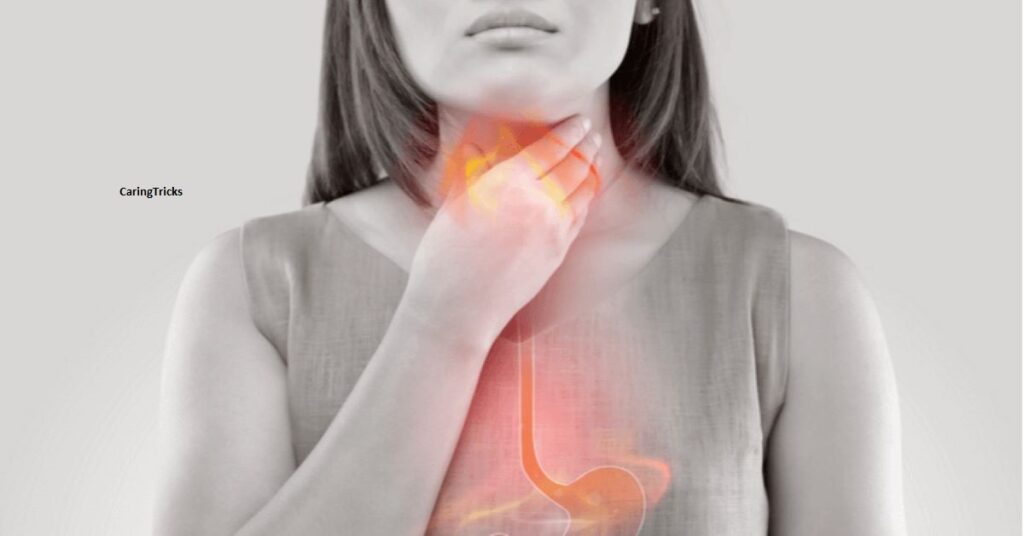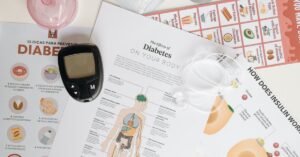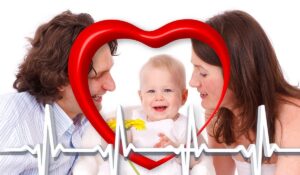GERD: Symptoms, Causes, Diagnosis and Treatment

Acid reflux, also known as burning sensation condition (GERD), is an average digestive disorder that happens when stomach acid flows support into the esophagus. The esophagus is the tube that accomplishes drink from the backtalk to the stomach. It occurs when the lower esophageal sphincter (LES), a ring of muscle that separates the esophagus from the stomach, becomes weak or relaxes inappropriately. This allows stomach contents, including acid and bile, to flow back up into the esophagus, causing heartburn and other symptoms.
Symptoms of GERD:
GERD can cause a range of uncomfortable symptoms, including heartburn, chest pain, and difficulty swallowing. In some cases, GERD can also lead to more serious health complications.
Here are some common symptoms of GERD:
- Heartburn: This is the ultimate average manifestation of GERD, and is from a burning perception in the rib cage or neck. Heartburn frequently happens after consuming, and maybe lessened by over-the-counter antacids.
- Chest pain: Some people with GERD may experience chest pain, which can range from mild to severe. The pain may be worse after eating or when lying down, and may be relieved by antacids or other medications.
- Difficulty swallowing: Some people with GERD may have difficulty swallowing, or may feel like food is getting stuck in their throat. This can be a sign of a more serious condition called esophageal stricture, which occurs when the esophagus becomes narrowed due to scarring.
- Regurgitation: Some people with GERD may experience regurgitation, or the feeling of food or liquid coming back up into the mouth. This may be followed by a sour or sharp taste.
- Nausea and vomiting: Some population accompanying GERD can have sickness in stomach and vomiting on account of their condition.
- Hoarseness and sore throat: Acid reflux can irritate the lining of the esophagus and cause hoarseness and a sore throat.
It’s important to note that these symptoms can also be caused by other conditions, so it’s important to speak with a healthcare provider if you are experiencing any of these symptoms. They can help pinpoint the cause and advise the appropriate situation. If you are experiencing manifestations of GERD, it’s important to talk with a healthcare worker to decide the cause and take the appropriate situation.
Causes of GERD:
There are several potential causes of GERD, and it is often a combination of several factors that contribute to the development of the disorder. These are any of ultimate widespread causes of GERD:
- Hiatal Hernia: A hiatal hernia is an ailment at which point the top division of the belly protrudes into the chest cavity by way of the diaphragm. The lower esophageal sphincter (LES), the muscles that divides the esophagus from the stomach, may relax as a result of this, allowing stomach acid to flow back into the esophagus.
- Pregnancy: Pregnancy can cause GERD due to increased pressure on the abdomen and relaxation of the LES.
- Obesity: Getting overweight or obese can place extra strain on the abdomen, leading to GERD.
- Smoking: Smoking can irritate the esophageal lining and weaken the LES, making it easier for stomach acid to pass back into the esophagus.
- Consumption of Alcohol: Alcohol can irritate the lining of the esophagus and weaken the LES, resulting in GERD.
- Certain Medications: Nonsteroidal anti-inflammatory medicines (NSAIDs), for example, might induce GERD by relaxing the LES and boosting stomach acid production.
- Spicy Food: Spicy meals can irritate the lining of the esophagus and elevate stomach acid production, which can contribute to GERD.
- Citrus Fruits: Including oranges and lemons, can increase stomach acid production and irritate the esophagus, leading to heartburn.
- Chocolate: Chocolate contains substances that can relax the LES and increase the production of stomach acid, leading to GERD.
- Caffeine: Caffeine can relax the LES and increase the production of stomach acid, leading to GERD.
- Acid reflux: This may be induced by a sort of determinant containing diet, behavior, and fundamental healing environments. Also, Stress and sure cures can too help the incident of burning sensation.
Diagnosis for GERD:
There are several methods used to diagnose GERD, including:
- Patient Records and Physical Exam: Your doctor will inquire about your symptoms, including how frequently they occur and what appears to be the source of them. They will also undertake a physical exam to look for indications of GERD, such as esophageal redness or edema.
- The Barium Swallow Test: This includes swallowing a liquid containing barium, which covers the interior of the esophagus and stomach. The esophagus and stomach are then examined using X-rays to detect if there are any abnormalities.
- Endoscopy: Endoscopy entails passing a thin, flexible tube with a camcorder on the end through the mouth and into the esophagus and stomach. This allows the doctor to see the inside of the digestive tract and look for any signs of damage or irritation.
- Manometry: This test measures the pressure and power shortenings in the esophagus. A thin hose is introduced through the nose and below into the esophagus. The tube records the pressure and muscle contractions as the person swallows.
- Acid (pH) Probe Ambulatory Test: A sensor is installed in your esophagus to monitor when and how long stomach acid keeps repeating there. The monitor is linked to the little computer that you drape over your shoulder or carry around your waist. The monitor may be a thin, adaptable tube (catheter) established through your nose and into your esophagus. It might also be a clip placed into your esophagus during an endoscopy. After approximately two days, the clip dissolves in your stool.
- An upper digestive system X-ray: This is transported after you consume a blanched material that covers and fills the interior interlining of your digestive scheme. Your doctor may see a silhouette of your stomach and esophagus thanks to the covering. This is exceptionally advantageous for those who have trouble swallowing. Additionally, you could be instructed to take a barium pill in order to detect an esophageal constriction that might impair your ability to swallow.
- Trans Nasal Esophageal Swab: This examination is performed to check for any esophageal injury. Through your nose, a narrow, flexible hose with electronic devices is advanced into your esophagus. A video screen receives images from the camera.
In order to begin the proper therapy for GERD, it is critical to have an accurate diagnosis.
Therapy of GERD:
There are numerous treatment options for GERD, and the optimum strategy will depend on the severity of your symptoms as well as any underlying diseases. Here are some popular GERD treatments:
Changes in Lifestyle:
Making dietary and lifestyle adjustments can frequently help lessen the frequency and severity of GERD symptoms. This may entail avoiding foods that cause your symptoms. Avoid fatty foods, alcohol, peppermint, foods that impede gastric emptying, such as fatty foods, large meals, stopping smoking, and decreasing weight if you are overweight.
Medication:
An assortment of drugs are possible to treat the syndromes of GERD.
Antacids:
For sporadic and infrequent reflux symptoms, over-the-counter antacids work well. Antacids may make the situation worse if taken regularly. They pass through the stomach fast, which causes your stomach to produce more acid as a result.
Histamine Blockers:
Histamine 2 (H2) blockers are medications that aid in reducing the production of acid. About 50% of individuals with esophageal erosions respond well to H2 blockers.
Proton Pump Inhibitors:
(PPIs) are medications that obstruct the three main routes for the creation of acid. PPIs are essentially more persuasive than H2 blockers at lowering acid creation. Even in individuals with significant esophageal injury, PPIs are effective in treating erosive esophagitis.
Prokinetic Agents:
These are medications that increase the smooth muscle action in your gastrointestinal system. These medications perform considerably worse than PPIs. They could be prescribed by your doctor together with an acid-suppressing medication.
Surgery:
In severe cases of GERD, surgery may be recommended to repair the lower esophageal sphincter (LES) or to remove the damaged portion of the esophagus. If you wish to stop utilizing long-term GERD drugs or if your GERD manifestations do not increase with behavior changes and cures, your doctor may advise surgery. Complications from surgery are more likely to occur than from medications.
Fundoplication:
The most popular GERD procedure is called a fundoplication. Most of the time, it provides a longer relief from GERD symptoms. During the situation, a physician knits the top of your stomach near the end of your esophagus to reinforce the pressure on the lower esophageal sphincter and help in the avoidance of reflux.
Fundoplication can be done either open or laparoscopic surgery. In the increasingly popular laparoscopic fundoplication procedure, doctors create minute incisions in the belly and introduce specialized instruments to carry out the procedure. Following a laparoscopic fundoplication, numerous little scars. In an open fundoplication, the abdominal cavity is more severely sliced.
Weight-Loss Surgery:
Your doctor keeps warn of weight-loss medical procedures, also known as bariatric surgery, often gastric open-heart surgery, if you have GERD and are very overweight. You can lessen your GERD symptoms and decrease weight with bariatric surgery.
Endoscopy:
In a tiny number of situations, doctors may advise treatments for GERD that involve endoscopy. Endoscopy is acted by putting an endoscope—a thin, responsive hose accompanying a light and camera—through your opening and into your esophagus. Doctors concede possibility utilize endoscopic processes to execute radiofrequency fallout to the lower esophageal sphincter or to stitching the top of your stomach about the sphincter. These techniques aren’t frequently used by doctors.
LINX Gadget:
Around the point where the stomach and esophagus converge, a ring of small magnetic beads is coiled. While being weak enough unoccupied drink flows through, the magnetic attractiveness between the objects is forceful enough to maintain the connection, unable to be penetrated by refluxing acid. A less invasive surgical procedure can be used to install the LINX device. Magnetic resonance imaging and airport security are unaffected by the magnetic beads.
Transoral Fundoplication Without Incision (TIF):
With this novel technique, the lower esophagus is partially wrapped using polypropylene fasteners to tighten the lower esophageal sphincter. There is no surgical incision necessary for TIF because it is done via the mouth using an endoscope. Its benefits include high tolerance and speedy recovery.
It’s mainly to work together with your healthcare provider to decide the best choice treatment approach for your distinguishing needs. They can help you identify any underlying conditions that may be contributing to your GERD and work with you to develop a treatment plan that is safe and effective.
In addition to pursuing a healing situation, it’s likewise mainly to notice your syndromes and triggers. Keep a food diary to track what you eat and how you feel after eating, and be aware of any activities or positions that seem to worsen your symptoms. By taking an active role in your treatment and self-management, you can effectively manage your GERD and reduce the risk of complications.
If you are bearing burning sensation syndromes, it is critical that you talk over with another healthcare expert for an inclusive disease and situation plan. If left untreated, acid reflux can develop to more significant health issues such as esophageal inflammation, esophageal strictures, and even esophageal cancer.






